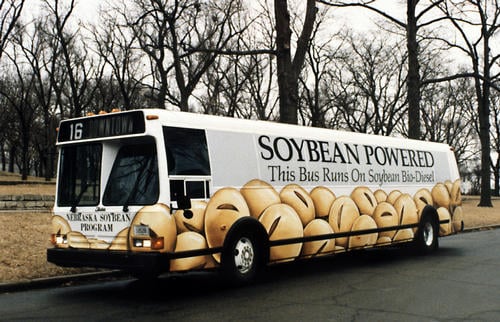In the San Joaquin Valley, it’s going to be hot for the remainder of this week (today) and next. We’re talking triple-digit temperatures and in the Valley that means summertime smog. Fortunately, there will be some relief: even though small, some is better than none.
As Alex Breitler reporting in the Stockton Record explained, residents warmly welcomed and greeted the city’s newest electric buses which debuted Aug. 24, 2017.
On Thursday the 44 route became the domain of these 40-foot-long renewable-energy, no-emissions buses, according to Breitler.
Adding to this, the San Joaquin Regional Transit District explained this route will feature an all-electric bus fleet – a first for the nation.
Further, a second all-electric bus route is slated to be in operation in January of next year.
For the city and south Stockton in particular, this clean technology transportation mode, that it arrived when it did, seems a most welcome addition.
Add to this the upcoming addition inside city limits as well of two locomotives emitting far fewer pollutants than the predecessor locos these newer ones will replace.
The San Joaquin Valley Air Pollution Control District (Valley Air District) in an Aug. 25, 2017 news release specified: “The Valley Air District will provide $1,812,500 for a clean air project at the Port of Stockton aimed at reducing air pollution and improving public health in communities near the port. The funding provided by the Valley Air District will help pay for replacing two old locomotives with the newer Tier 4 engines that are 90% cleaner and will reduce 218 tons of emissions.” The air district went on in the release to explain that $3,067,657 more was secured from various sources, from which “$392,657 from the City of Stockton’s Terminal and Eastern Tax and Metro Ports Use Tax revenues,” was obtained.
Adds the air district:
“The first project, a partnership with Omni TRAX, Inc., will replace one pre-model year 1973 non-regulated and unmodified 1963 built EMD SW1200 diesel Switch locomotive with a new Tier 4 Knoxville Locomotive Works (KLW) SE10B T4L four-axle diesel Switcher. The replacement locomotive will be a single-engine EPA Tier 4 certified and ARB verified Switcher locomotive. The new locomotive is more than 90% cleaner than the existing, high-polluting locomotive it is replacing. Based on past usage records, the existing Switcher’s annual fuel usage is 16,000 gallons/year. The existing Switcher is used within the Stockton Terminal and Eastern Rail Yard in Stockton and throughout 10 miles of track, eight miles of which are through residential neighborhoods within the city of Stockton and two miles through commercial and residential zoned areas. The Valley Air District is funding slightly less than 50% of the total cost.
“The second project, a partnership with the Metropolitan Stevedore Company, will replace one non-regulated and unmodified 1984 built GE C30-7 six axle diesel line-haul locomotive with a new Tier 4 Knoxville Locomotive Works (KLW) SE24C DET4L six-axle diesel line-haul locomotive. The replacement locomotive will be a single-engine EPA Tier 4 certified and ARB verified line haul locomotive. The new locomotive is more than 90% cleaner than the existing, high-polluting locomotive being replaced. Based on past usage records, the existing locomotive annual fuel usage is 26,673 gallon/year. The existing GE C30-7 locomotive is used to breakdown incoming rail car trains and for unloading and exporting shipments of mineral commodities. This locomotive operates within the Port of Stockton property. The Valley Air District is funding approximately 30% of the total cost,” the air district noted.
This north Valley city’s air is getting cleaner even if on a bus-by-bus and locomotive-by-locomotive basis.
It’s all good.
This post was last revised on Dec. 5, 2020 @ 6:22 p.m. Pacific Standard Time.
– Alan Kandel
